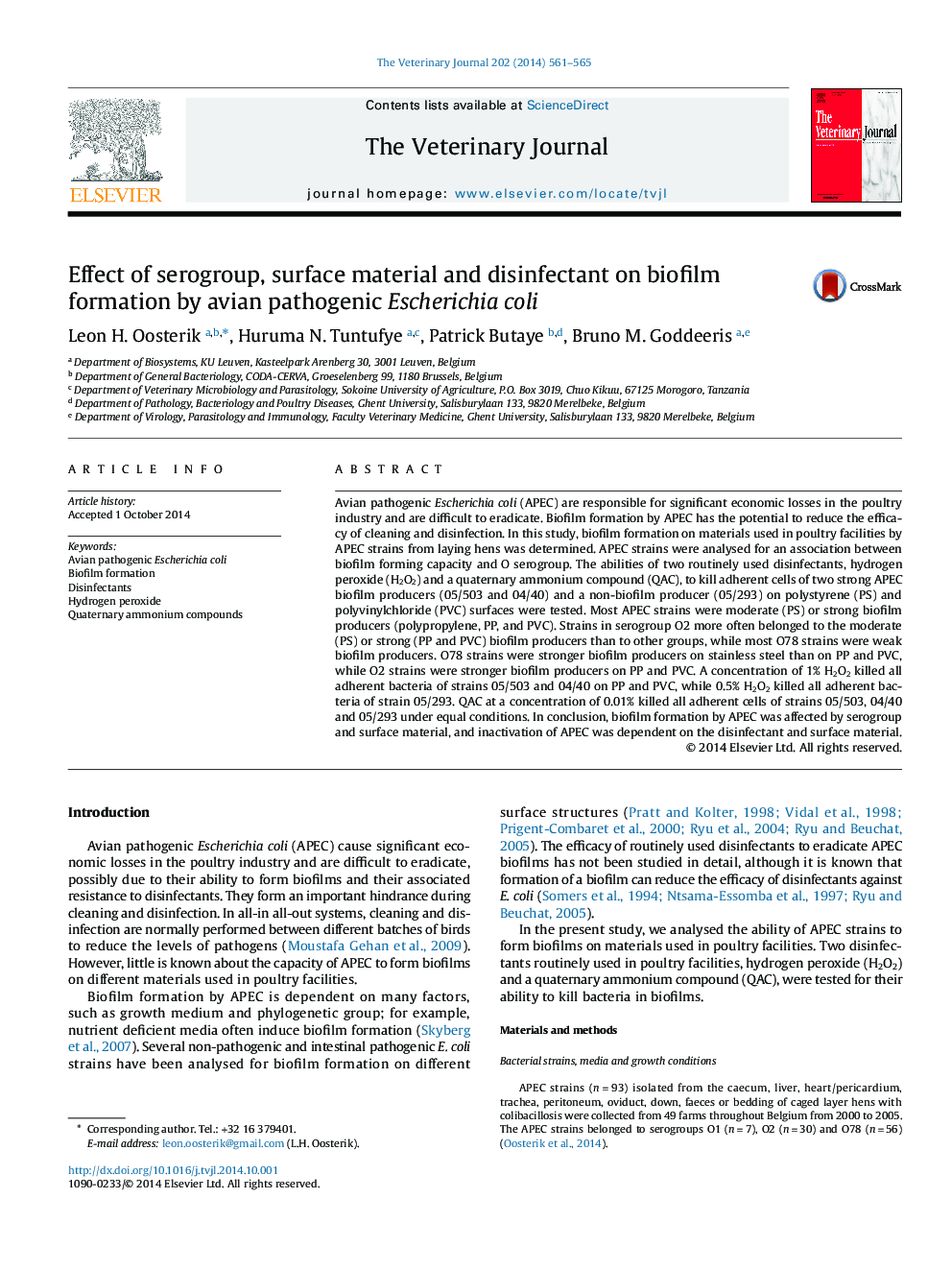| کد مقاله | کد نشریه | سال انتشار | مقاله انگلیسی | نسخه تمام متن |
|---|---|---|---|---|
| 5797799 | 1111760 | 2014 | 5 صفحه PDF | دانلود رایگان |
- Biofilm formation by avian pathogenic Escherichia coli (APEC) strains was tested on materials used in poultry houses.
- Strains were studied for a relation between biofilm-forming capacity and serogroup.
- Biofilm formation of APEC strains was affected by serogroup and surface material.
- Biofilm destruction was dependent on the disinfectant and surface material.
Avian pathogenic Escherichia coli (APEC) are responsible for significant economic losses in the poultry industry and are difficult to eradicate. Biofilm formation by APEC has the potential to reduce the efficacy of cleaning and disinfection. In this study, biofilm formation on materials used in poultry facilities by APEC strains from laying hens was determined. APEC strains were analysed for an association between biofilm forming capacity and O serogroup. The abilities of two routinely used disinfectants, hydrogen peroxide (H2O2) and a quaternary ammonium compound (QAC), to kill adherent cells of two strong APEC biofilm producers (05/503 and 04/40) and a non-biofilm producer (05/293) on polystyrene (PS) and polyvinylchloride (PVC) surfaces were tested. Most APEC strains were moderate (PS) or strong biofilm producers (polypropylene, PP, and PVC). Strains in serogroup O2 more often belonged to the moderate (PS) or strong (PP and PVC) biofilm producers than to other groups, while most O78 strains were weak biofilm producers. O78 strains were stronger biofilm producers on stainless steel than on PP and PVC, while O2 strains were stronger biofilm producers on PP and PVC. A concentration of 1% H2O2 killed all adherent bacteria of strains 05/503 and 04/40 on PP and PVC, while 0.5% H2O2 killed all adherent bacteria of strain 05/293. QAC at a concentration of 0.01% killed all adherent cells of strains 05/503, 04/40 and 05/293 under equal conditions. In conclusion, biofilm formation by APEC was affected by serogroup and surface material, and inactivation of APEC was dependent on the disinfectant and surface material.
Journal: The Veterinary Journal - Volume 202, Issue 3, December 2014, Pages 561-565
